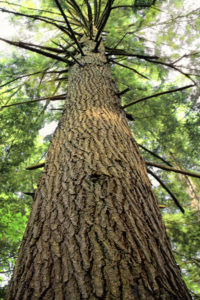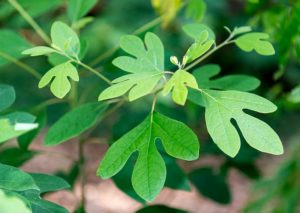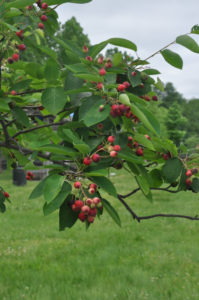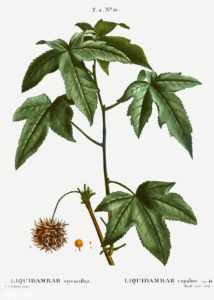
Native Americans, like many other indigenous tribes that lived off the land, practiced a sustainable way of living. They hunted, fished and cut down trees to provide for food, fuel, and shelter, but we can see that they had a need-based lifestyle, not a pleasure-based one.
The great reverence Native Americans had for trees, mountains, water bodies, and even the animals they killed for food, protected the world around them from exploitation. It also helped subsequent generations to continue with their traditional way of life. The Native American tribes maintained a unique relationship with trees, in particular.
In honor of the newly minted Indigenous Peoples Day holiday weekend, we’re celebrating and honoring Native American and Indigenous peoples as well as commemorating their histories and cultures by diving into their storied, intimate, and creative history with trees. This list could go on and on, but here are a select few, most of which we can help you add to your property for free through our residential planting program, RiverSmart Homes!
 American Persimmon | Diospyros virginiana
American Persimmon | Diospyros virginiana
The American persimmon, first documented in Virginia in 1609 by the English captain John Smith and later named Diospyros virginiana, is native to the majority of the Eastern and Midwestern United States. Although alien to the newly arrived settlers, who were unsure of what to make of its bitter fruit, it was a vital part of southeastern Native Americans’ diet. The American persimmon today is characterized most notably for its fruit, as well as its bark and leaves.

White Pine | Pinus strobus
In Native American history, the white pine supplied important nutrition in times of hardship, and the word “Adirondack” is an Iroquois term that was applied to a neighboring tribe (today also known as the Algonquians) who they knew to eat the soft inner bark of Pinus strobus. It could even be pounded and added to bread or other starchy foods, although they more often ended up feeding cattle and pigs instead of people. While we don’t plant White Pines, consider adding a local hero, the Virginia Pine to your property for free through our residential planting program, RiverSmart Homes. You can also get up to $50 back for planting this tree yourself through our tree rebate program.

Sassafras | Sassafras albidum
The sassafras tree does the most: it’s known for its aromatic smell, brilliant fall foliage, three unique leaf types, and lengthy use in food and medicine. There is a well-documented history of Native Americans and colonists utilizing sassafras as a medicinal and culinary addition, and a Spanish physician in 1574 even announced that sassafras was a cure for almost every human ailment! While that may not be the case, its roots and bark were commonly used to create a root beer-like tonic and tea from its leaves were touted to treat everything from skin sores to bronchitis to hypertension. You may see sassafras these days as file powder – a key ingredient in Louisiana Creole cuisine, specifically gumbo. You can get up to $100 back for planting this tree yourself through our tree rebate program.
 Serviceberry | Amelanchier canadensis
Serviceberry | Amelanchier canadensis
Trees often are more simply used as a food source. Case in point, the serviceberry, a member of the rose family, is known for its delicate flowers and delicious fruit. It’s is an easy-to-grow alternative to the blueberry and yields a very similar fruit. Some Native Americans would include serviceberries in their recipe for pemmican, an energy-dense mixture of meat, fat, and fruit used to sustain them through winter and on long trips. This tree is available through our residential planting program, RiverSmart Homes. You can also get up to $50 back for planting this tree yourself through our tree rebate program.

Tuliptree | Liriodendron tulipifera
The tulip tree is actually the tallest deciduous tree in North America, and it is the only species of its genus on this continent. There is one other species in Asia, Liriodendron chinensis. The tulip tree is also one of our fastest-growing trees here in the Washington, D.C. region. Often nestled in a little creek or stream valley, they grow quickly and often fool you into looking older than they really are. With its unusually straight trunk, tulip tree logs were hollowed out by Native Americans for use as canoes. Given the right conditions these can grow into majestic canopy trees, therefore you can also get up to $100 back for planting this tree yourself through our tree rebate program.

Sweetgum | Liquidambar styraciflua
Sweetgum trees are large, deciduous trees found in Asia and North America. Sweetgum trees are important resources for medicinal and other beneficial compounds. Many of the medicinal properties of sweetgum are derived from the resinous sap that exudes when the outer bark of the tree has been damaged. Native Americans also used the sap, known as storax, for medicinal purposes, including controlling coughs and dysentery and treating sores and wounds. In addition to storax, the sap of the sweetgum tree was burnt as incense or mixed with tobacco leaves as a sedative as well as used in the making of soaps, cosmetics, fixatives in perfumes, adhesives, and lacquers. While you probably won’t be making soap with them, you can enjoy their spectacular fall foliage and get up to $100 back for planting this tree yourself through our tree rebate program.
Top photo is a birch bark canoe courtesy of the Minnesota Historical Society

